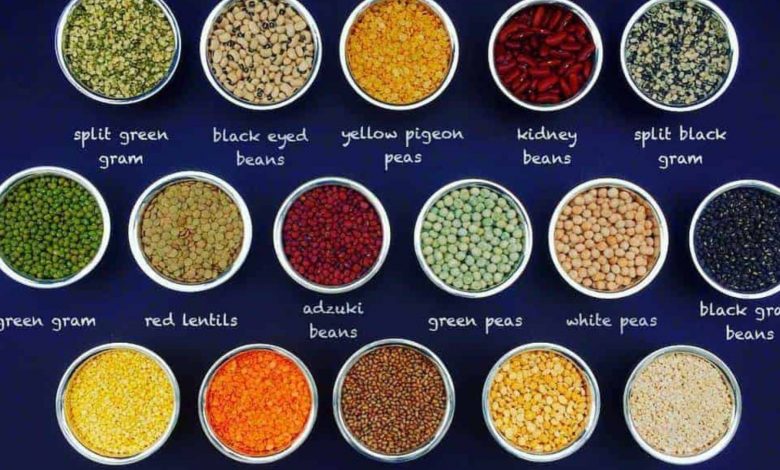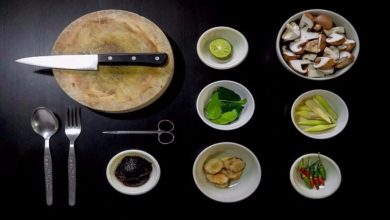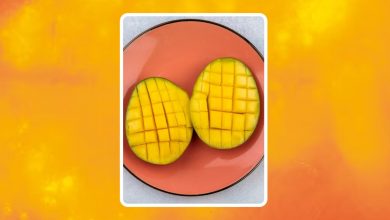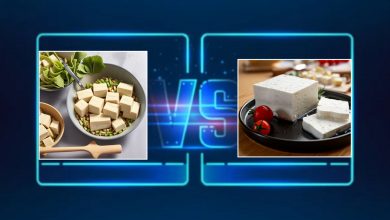A Quick Guide to Indian Pulses: Indian Lentils

Pulses, also known as lentils and dals. Pulses are the staple food of India’s rich culinary tradition. India is a country known for its vivid spices and fragrant curries. These little nutritional powerhouses are not only tasty but also very adaptable which serves as the foundation for a plethora of vegetarian recipes. With the help of this thorough guide, you will be well-prepared to delve into the fascinating world of Indian pulses and Indian beans.
Unveiling the “List of Pulses in India”
India boasts a staggering types of pulses, each with its unique flavor, texture, and culinary applications. Here’s a glimpse into some of the most popular types of pulses :
- Moong Dal, also known as Green Gram: This little, green pulse is available whole or divided (husked and halves). Moong dal has a mild, somewhat sweet taste and cooks rapidly. It is excellent in soups, stews, and even desserts like kheer.
- Masoor Dal (Red Lentil): Known for its earthy flavor and vivid red color, masoor dal boils down nicely to create a creamy dal foundation. It’s a mainstay in hearty meals like dal Makhani and a fantastic source of protein.
- Toor Dal, also known as Pigeon Pea, is a firm-textured, golden-yellow pulse that can be purchased whole or split. It tastes somewhat nutty. The star of the famous South Indian sambar, toor dal is versatile enough to work well in many dishes.
- Urad Dal, also known as Black Gram, is a jet-black pulse that may be purchased whole, divided, or without its black husk. The most popular uses of urad dal are in the preparation of crunchy lentil fritters (pakora) and fluffy lentil pancakes (vada). It becomes the creamy white urad dal, ideal for dals and dips, when it is husked and split.
- Split Bengal Gram, or Chana Dal, is a staple in Indian cuisine due to its bright yellow color, somewhat gritty texture, and nutty flavor. Dal is used in salads, dals, and even street food such as the popular chana masala.
This is only a sampling of the “list of Indian lentils,” since there are plenty of others to explore, each possessing unique gastronomic enchantment. The options are infinite, ranging from the earthy black chana (chickpea) to the vivid green vatana (peas)!
Beyond Names: Exploring the “Types of Pulses Medically”
Pulses are not just culinary delights; they’re nutritional powerhouses. Here’s a peek at their health benefits:
- Rich in Protein: Vegetarians and vegans will find pulses to be an excellent source of plant-based protein.
- Fiber Powerhouse: High in fiber, pulses enhance digestion, induce fullness, and help control blood sugar levels.
- Benefits for Heart Health: Pulses’ minimal fat and cholesterol content promotes heart health.
- Packed with Nutrients: Iron, folate, potassium, and other vital vitamins and minerals may all be found in abundance in pulses.
- So the next time you’re looking for something nice and nourishing, pick up a bag of pulses! They’re an endless gift to your palate and overall well-being.
A Culinary Canvas: Exploring types of pulses with Names
Think of a a bustling market full of colorful bags filled with pulses. Every kind begs you to discover what culinary wonders it has. Although a thorough explanation complete with pictures would be great, the following are some more “types of pulses with names”:
- Rajma kidney beans: These rich, dark red beans provide stews and curry a hearty taste.
- Horse Gram, also known as Kulith, is a distinctive black pulse that tastes somewhat bitter and is frequently used in local recipes.
- Moth Beans (Matki): Ideal for salads and dals, these little brown beans have a sweet and nutty flavor.
- Black-eyed beans, also known as lobia beans, are a versatile beans that go well with salads and curries because of its mild flavor and creamy texture.
A World of Flavor Awaits: How Many Types of Pulses in India?
There is disagreement regarding the precise number of pulse types in India; estimates range from a few dozen to well over a hundred. This amazing diversity is a reflection of the many areas’ diverse agricultural histories and culinary customs.
Five Examples of pulses to Spark Your Culinary Journey
Feeling overwhelmed by the sheer “number of types of pulses in India”? Start your exploration with these five delicious options:
- Moong Dal Khichdi: A warming porridge that can be consumed as a light meal or as a cold-relieving treatment. It is made with moong dal, rice, and spices.
- Masoor Dal Fry: A tasty and easy meal made with cooked masoor dal, onions, and tomatoes with a hint of spice.
- Toor Dal Tadka is a straightforward but filling meal made by simmering toor dal with curry leaves, cumin seeds, and ghee.
- Urad Dal Vada: Served with chutneys, these light and fluffy lentil fritters cooked with urad dal batter are a favorite street food snack.
- Chana Masala: A filling and aromatic dish made with chana dal simmered in a thick sauce made with tomatoes and onions and fragrant spices.
These are just a few examples to whet your appetite. With a little exploration, you’ll discover a whole world of delectable pulse-based dishes waiting to be explored.
The Beauty of Pulses: Indian lentils
Beyond merely being a tasty and wholesome dietary source, pulses provide more. They’re quite sustainable as well. Pulses have a reduced carbon footprint and require less water to cultivate than crops that are high in resources, such as meat. Not only are pulses good for your body, but you’re also choosing a healthier planet when you include them in your diet.
Types of Pulses : Your Guide to a Flavorful Future
There is a fascinating journey waiting to be experienced in the realm of Indian pulses. Pulses are a real gift from the Indian culinary culture because of their adaptability, nutritious content, and sustainable impact. The apparently unending aisles of dals at the grocery store shouldn’t scare you off the next time you visit. Accept the exploration, choose a pulse that sparks your interest, and go out on a delightful voyage of learning. You’ll soon be creating delectable and nourishing pulse-based meals that will have you craving more with just a little experimenting.
Recall that the many possibilities of Indian food are what make it so beautiful. Thus, use your imagination, try out various spices and tastes, and figure out how you want to experience the enchantment of Indian pulses!



